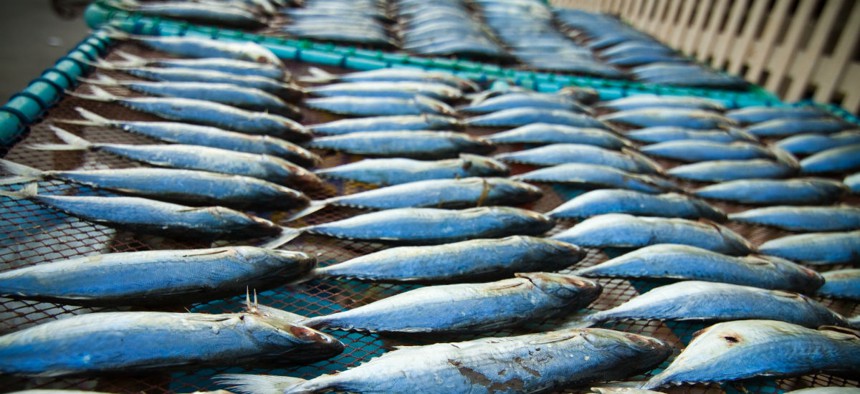Global Satellite Monitoring May Be Key to Keeping Illegally Caught Fish Off Your Dinner Table

Chonlapoom Banharn/Shutterstock.com
Satellite data may be one way to identify smuggled fish.
Illegal fishing damages economies and endangers ocean ecosystems. Despite decades of effort, as much as 20 percent of all fish caught is hauled from the water illegally. That’s in part because it’s almost impossible to prevent illegally caught fish from getting mixed in with legal catch. Even when port security is operating perfectly, it’s always possible for fishing boat to transfer its illicit cargo to a refrigerated vessel, or “reefer,” while at sea. Through such transshipments, illegal fish gets to your dinner table.
Researchers at Global Fishing Watch—a partnership of Oceana, Sky Truth and Google—have for the first time used data from the Automated Information System to detect pairs of vessels meeting at sea. AIS is a ship-to-satellite system that constantly transmits a ship’s location at sea. Though not all fishing vessels carry AIS, nearly all reefers do and thus those ships receiving the fish can be uniquely identified from the data.

From 2012 to 2016 researchers identified 5,000 likely cases of transshipment—meetings between fishing vessels and reefers. They also found an additional 86,000 cases where two reefers met at sea, which may also indicate smuggling.
These meetings are not evenly distributed across the globe. Each country has an Exclusive Economic Zone that extends 200 nautical miles from their shores. Nearly a third of all potential transshipments happened within the Russian EEZ. The majority of the rest took place on the high seas—often just outside of a country’s jurisdiction.

This isn’t the first novel use of satellite data that Global Fishing Watch has published, nor is the group alone in using satellites to try to stop illegal fishing. Another effort, called Project Eyes On the Sea, marries AIS data with proprietary government data, enabling states to directly intercede when they spot illegal fishing.
Though we’re still a long way from effective, global enforcement, the data provide a plausible route to choking off the distribution of illegal fish, even if they are sold far from shore.





